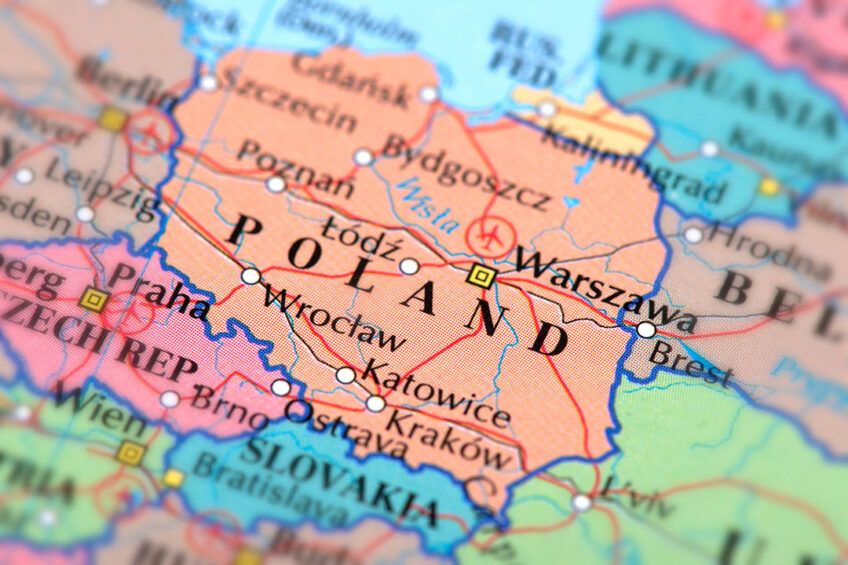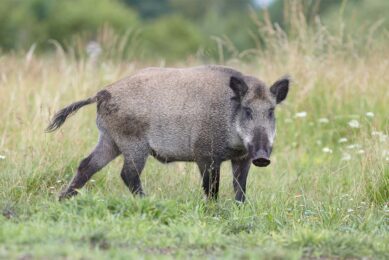Big pig farms keep growing, despite crisis in Polish pig industry

The number of pigs in Poland increased by 720,000 as big farms expanded their capacities in the second quarter of 2023. This trend however, will not last long.
The Polish pig industry faces a massive consolidation trend as the number of pig herds in the country keeps shrinking. As of June 30, 2023, the Agricultural Ministry registered 52,900 herds in the country. This is 900 less compared to the end of the first quarter. Almost half of the Polsih pig herds has disappeared since 2019.
24 pig herds disappear every day
A report by the Agency for Restructuring and Modernisation of Agriculture (ARMA) indicated that 97% of the growth in the pig population in the second quarter of 2023 came from farms keeping at least a few hundred pigs. 60% of the growth came from farms with at least 1,000 pigs. Small farms keep closing, even though this trend slowed down compared to 2022.
On average, Poland loses 24 pig herds per day according to ARMA. Farms keeping less than 20 pigs are hit hardest. Currently, they account for 2.25% of all pigs in the country.
When wholesale prices spiked a few months ago, a large number of fattening farms decided to take advantage of the promising market dynamics
Brutal reality
“The rise in the number of pigs in the second quarter is a typical fluctuation for the Polish pig market,” Piotr Karnas, director of the pig department at Gobarto Breeder, told the Polish edition of agricultural title Top Agrar. “When wholesale prices spiked a few months ago, a large number of fattening farms decided to take advantage of the promising market dynamics.”
Reality, however, is going to be brutal for the Polish pig industry in the coming months, Karnas said. “The market braces for the impact of 2 overlapping trends. On the one hand, European pig prices are expected to dip in August and September. On the other hand, a bigger-than-usual pig population in Poland will put additional pressure on prices on the regional market.”
African Swine Fever
Some farms curtail operations due to African Swine Fever. (ASF) The local publication Farmer reported that the Polish pig industry suffered losses of 13.4 billion złoty ($ 3.2 billion) in the previous 5 years. The key factors making pig farmers’ lives harder in Poland are high feedstuff costs, low farmgate prices and ASF. Since the beginning of the year, the virus hit 14 farms, and 5,116 pigs were culled.
Plummeting pork prices
Alongside disappearing herds, Poland saw pork prices plummeting in July, which put additional pressure on the already strained sector. This was the take-away of a report by the Wielkopolska Chamber of Agriculture. Prices dropped by PLN 0.4 to 0.6 per kg ($ 0.10 to $ 0.15) in live weight, worsening the profitability situations for all farms, but in the first place, those buying feed on the open market.
Imported weaners
One of the key problems Polish pig farmers have to face is a 90% dependence on imported weaners, the report indicated. Currently, the country imports roughly 90% of weaners from other European countries, primarily from Denmark. This makes the Polish pig industry exposed to price fluctuations in foreign markets.
Trade balance is negative
There is also a negative trade balance in the Polish pig industry, which increasingly weighs on operations. In the first quarter of 2023, Poland imported 216,000 tonnes of pork, against 256,000 tonnes in the same period in 2022. Export dropped to 100,000 tonnes from 118,000 tonnes in 2022, the Polish Agricultural Ministry stated.
Poland imports most pork from Denmark (53,000 tonnes), Belgium (50,000 tonnes), Germany (44,000 tonnes), the Netherlands 24,500 tonnes and Spain (24,500 tonnes), while exports primarily to the Czech Republic (10,500 tonnes) Germany (8,000 tonnes), Slovakia (7,500 tonnes), Romania (6,500 tonnes) and the United Kingdom (6,500 tonnes).
Currently, Poland meets 80% of the demand in the domestic pork market. In the past few years, this figure has been gradually falling.
 Beheer
Beheer








 WP Admin
WP Admin  Bewerk bericht
Bewerk bericht